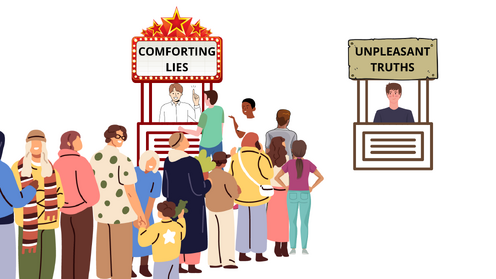Cognitive Dissonance
From MDS Wiki

Cognitive dissonance is a psychological theory proposed by Leon Festinger in 1957. It refers to the mental discomfort or tension that arises when a person holds two or more contradictory beliefs, values, or attitudes simultaneously, or when their behavior conflicts with their beliefs or values. This discomfort often leads individuals to try to reduce the dissonance, usually by changing their attitudes, beliefs, or behaviors, or by rationalizing or justifying their actions.
Here are a few key points about cognitive dissonance:
- Inconsistency: Cognitive dissonance occurs when there is inconsistency between what a person believes and what they do.
- Motivation to Reduce Dissonance: People are motivated to reduce this dissonance because it is psychologically uncomfortable. They can do this by changing their beliefs, acquiring new information that outweighs the dissonant beliefs, or reducing the importance of the conflicting belief.
- Examples:
- A person who smokes might experience cognitive dissonance because they know smoking is harmful to their health but continue to smoke. To reduce this dissonance, they might change their belief about the dangers of smoking or rationalize their behavior by emphasizing the benefits they perceive from smoking.
- Someone who values honesty but tells a lie might feel dissonance. To alleviate this, they might justify the lie as being harmless or necessary.
Cognitive dissonance is a fundamental concept in psychology that helps explain why people sometimes act irrationally or change their opinions to align with their actions.
[[Category:Home]]
